Philodendron Fun
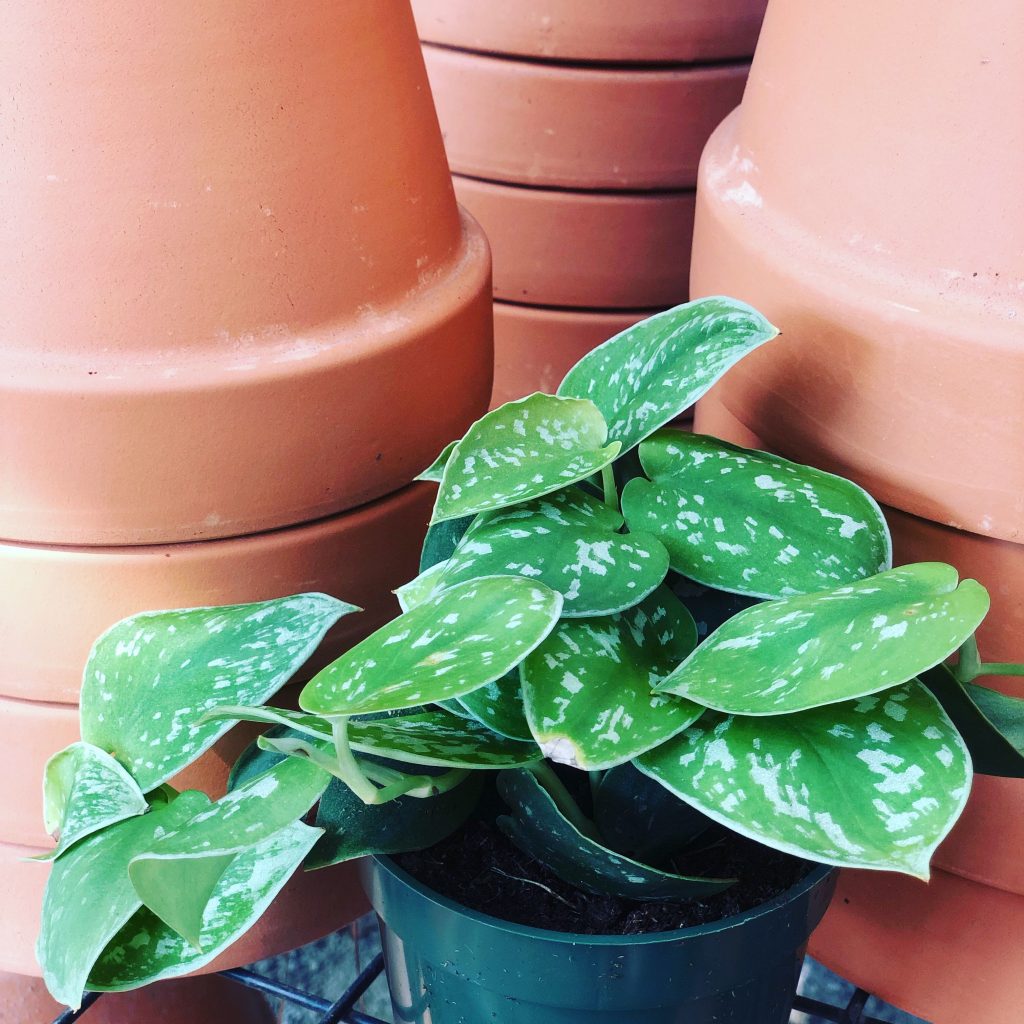
Silver Satin Pothos (Scindapsus pictus ‘Argyraeus’)
A Little Background on the Popular Arum Family Houseplants
Actually, we are going to talk about philodendrons and pothos plants; two of the most resilient houseplants to grow. The most common forms of both are climbing or vining type plants. In their native environments, philodendrons and pothos can be found climbing trees; when grown indoors, they climb or trail over tables, across shelves, and in windows. Pothos plants can also be readily found growing on wooden posts; these are typically called totems.
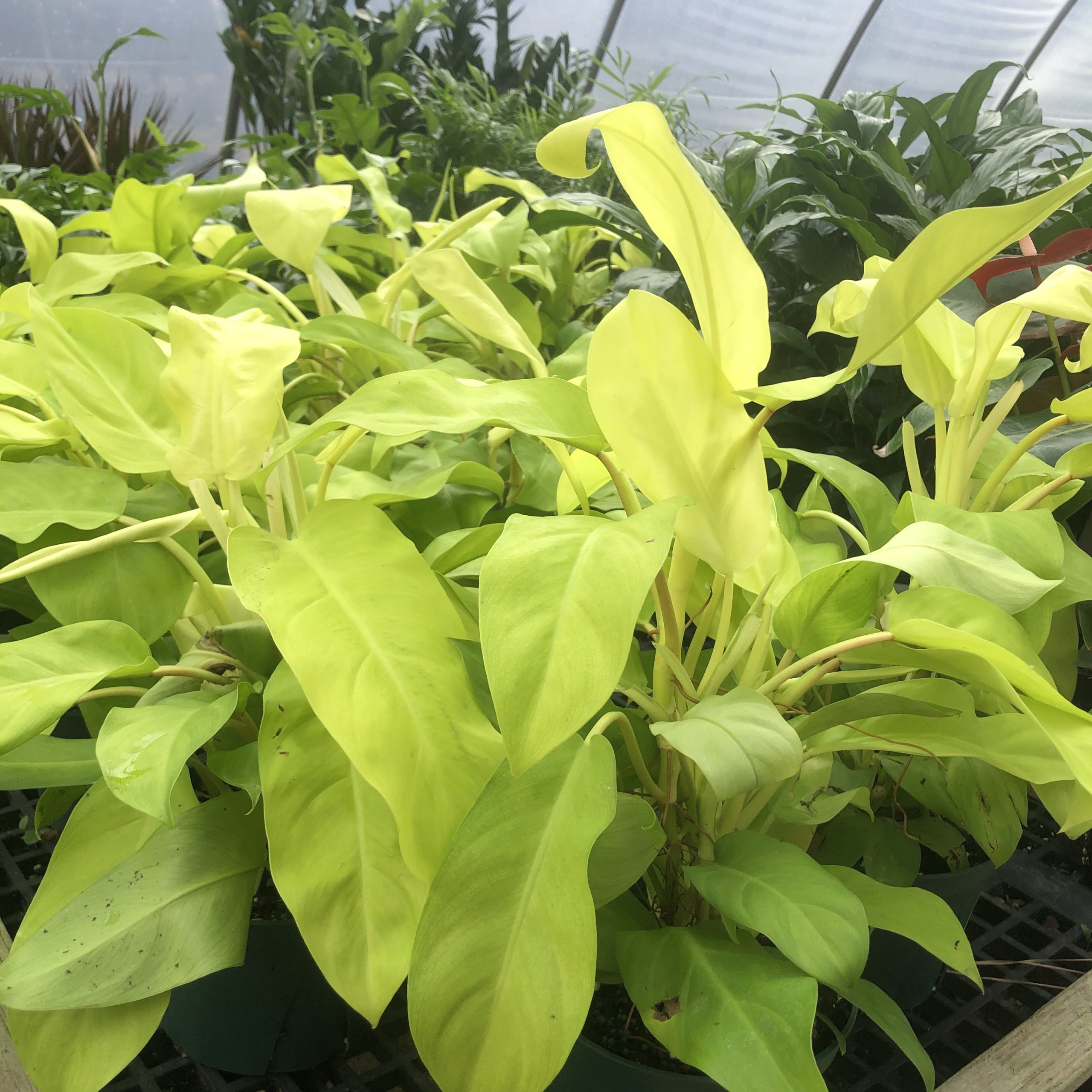
Golden Goddess Philodendron
There are also upright growing philodendrons such as Xanadu, Split Leaf Philodendrons and the above pictured, Golden Goddess. The VERY popular Monstera deliciosa plants used to be considered philodendrons but are technically not philodendrons. Monsteras are from Mexico, and known for their pineapple flavored fruit and large leaf and plant size. Hence their botanical or scientific name, Monstera deliciosa.
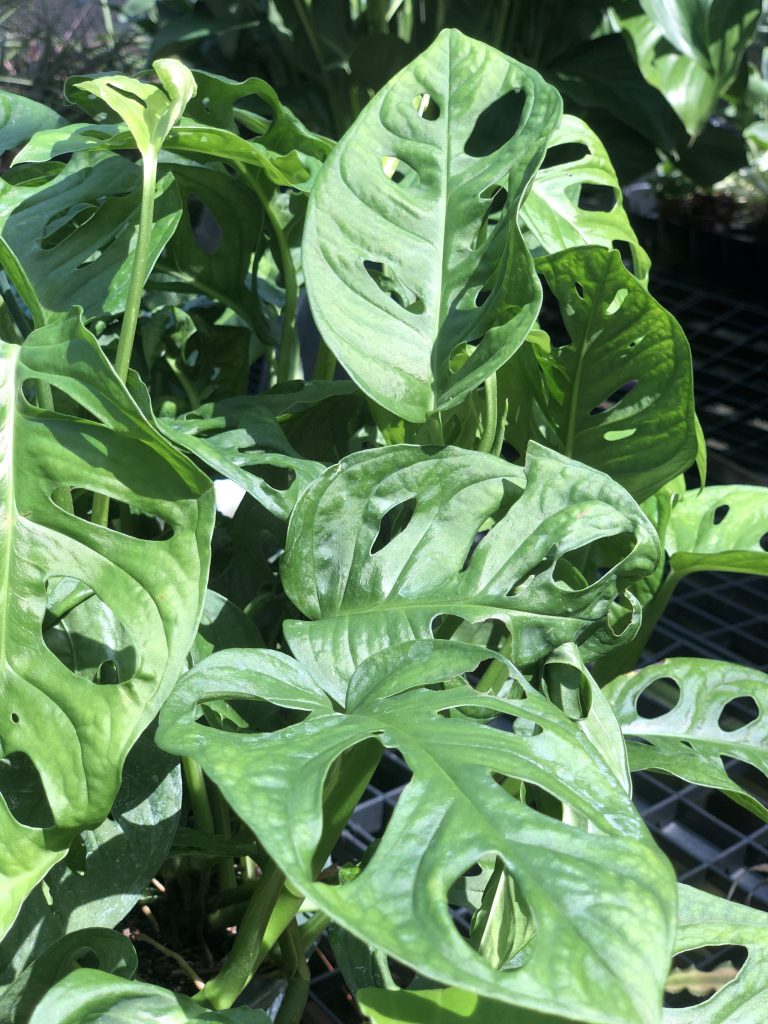
Swiss Cheese Plant (Monstera adansonii)
Monsteras are also known as the Swiss Cheese Plant, as are some Split Leaf Philodendrons. All of these plants, philodendrons, pothos and monsteras are in the Arum (Araceae) family and are often called Aroids.
What does all this plant jargon mean? In botanical terms, plants are grouped together first by Kingdom, then Division, Class, Order, Family, Genus, and Species. And there could also be what’s called a Cultivar, which is a cultivated variety of a plant.
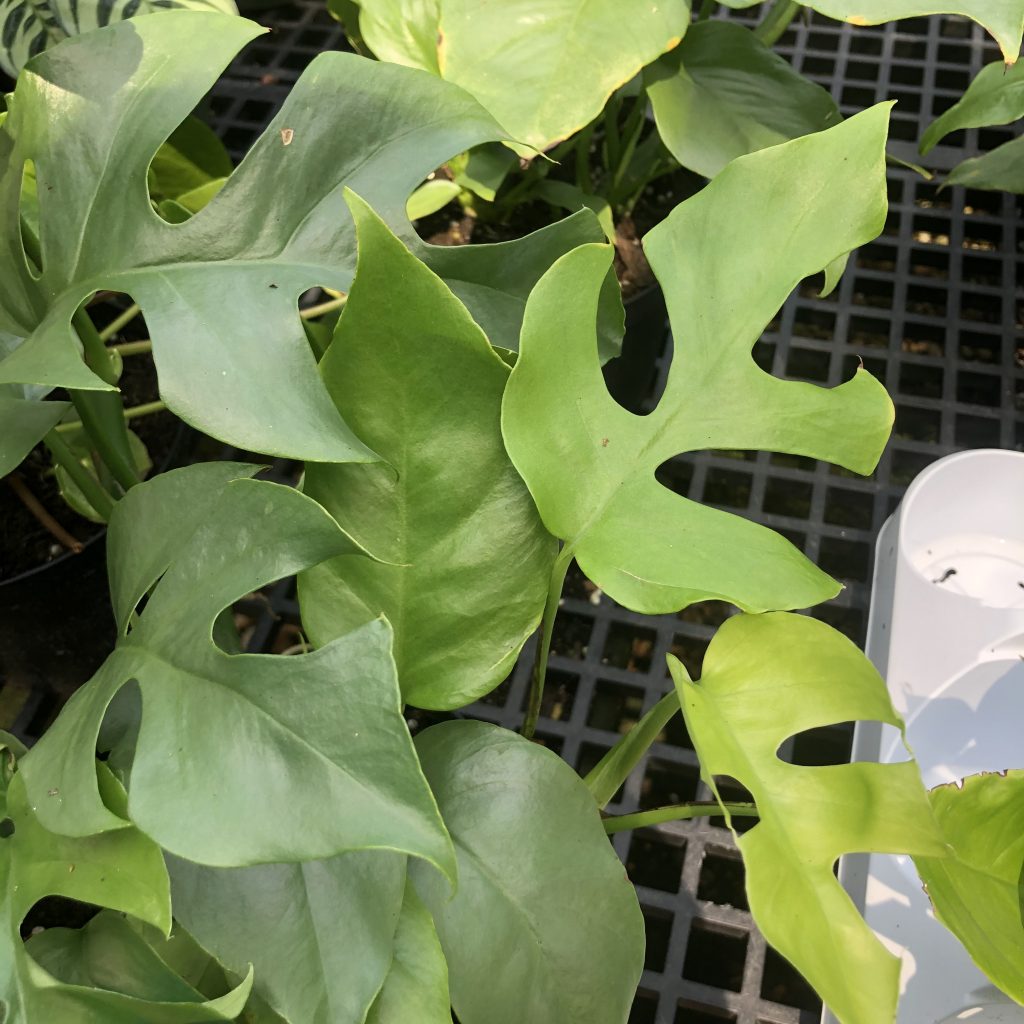
Mini Ginny Monstera/ Philodendron (Rhaphidophora tetrasperma) which is actually not a Monstera OR a Philodendron but is in the Araceae family
What this boils down to is that all plants in the Arum family share similarities. But, like any family, there can be a lot of contrasting characteristics too. For example, even plants that are closely related, such as in the same plant family, could require very different growing conditions. Fortunately, all of the Arum cousins we are talking about in this post, have similar growing needs.
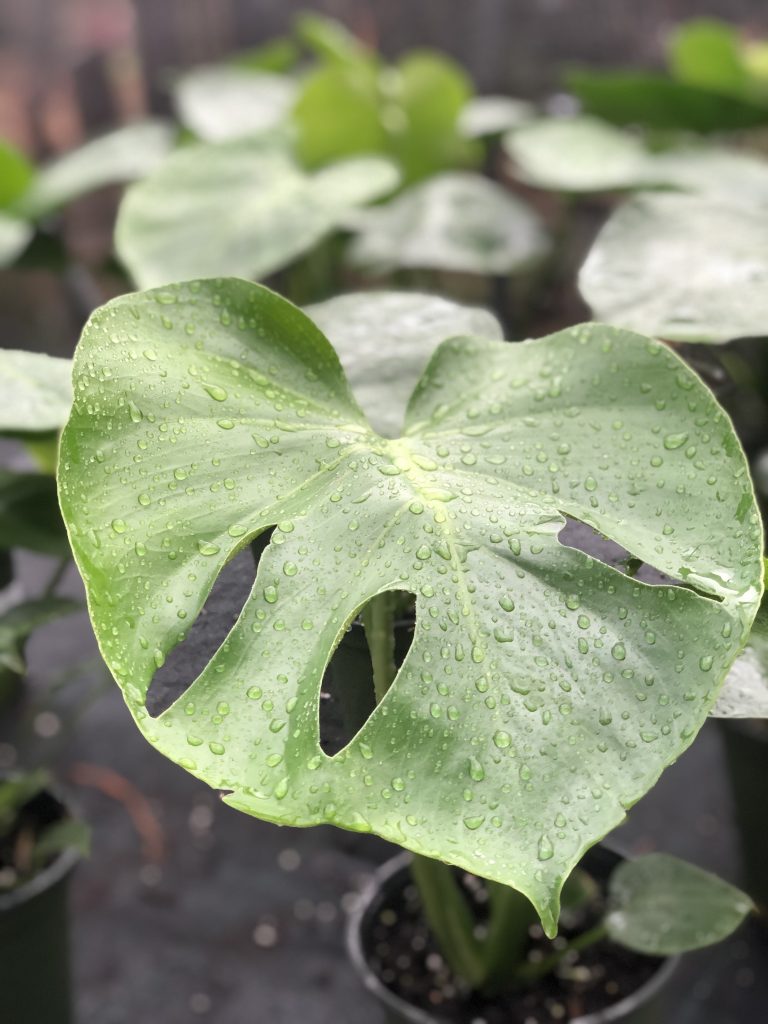
Monstera deliciosa
Potting Soil for Philodendrons, Pothos and Monstera Plants
Each of these plants prefer well-drained soil. We say that a lot, we know. What is well-drained soil? It’s a soil that can hold some water but will also allow water to be released. Usually, these soils consist of at least some sphagnum moss and perlite, and possibly small particles of bark. The perlite and bark break up the moisture absorbing moss, providing some air space and allowing water to flow through. The Ferti-Lome Ultimate Potting Mix and our Good Earth brand Professional Growing Mix are both well-draining potting soils.
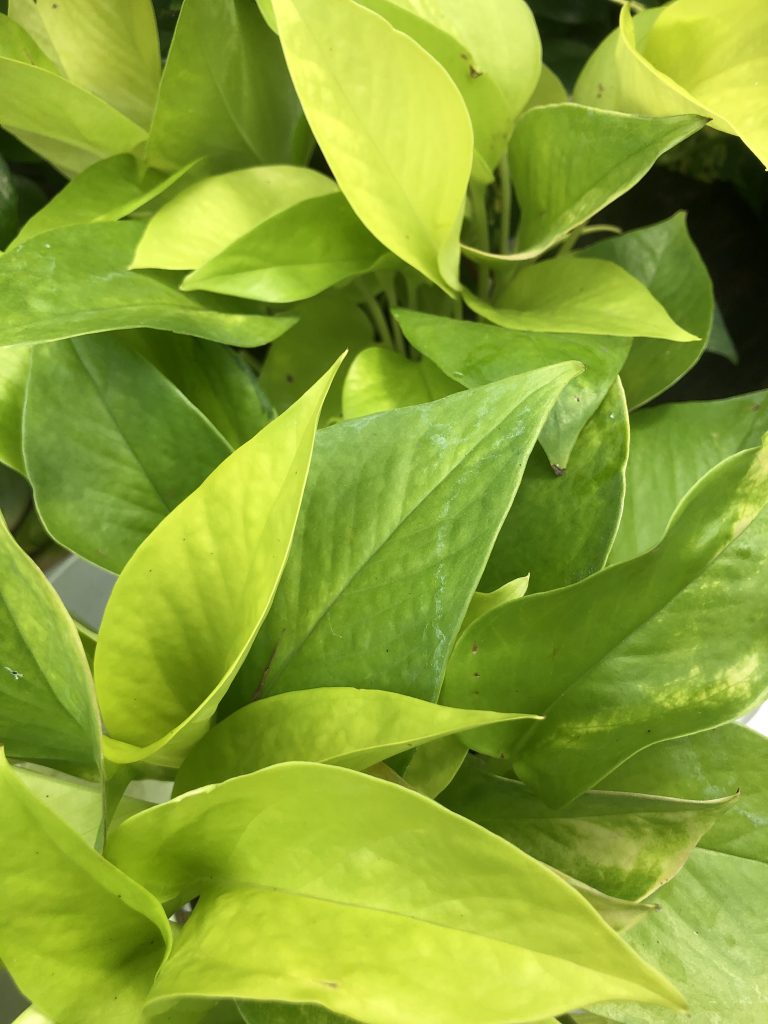
Neon Pothos (Epipremnum aureum ‘Neon’)
Poor-draining soils are much heavier and contain actual soil particles, unlike the soil-less potting mixes just mentioned. When choosing a ‘potting soil’ for tropical and seasonal color containers, go with the lighter soil-less potting soil. Besides being better for drainage, the lighter soil allows the small plant roots to grow and establish better. And yes, potting ‘soil’ is a bit of a misnomer; it’s more accurate to say potting or growing ‘medium’ because the potting ‘soil’ may or may not contain actual soil. While none of these plants mind being pot bound, they do like being repotted every few years. We have a whole post about potting and repotting houseplants here.
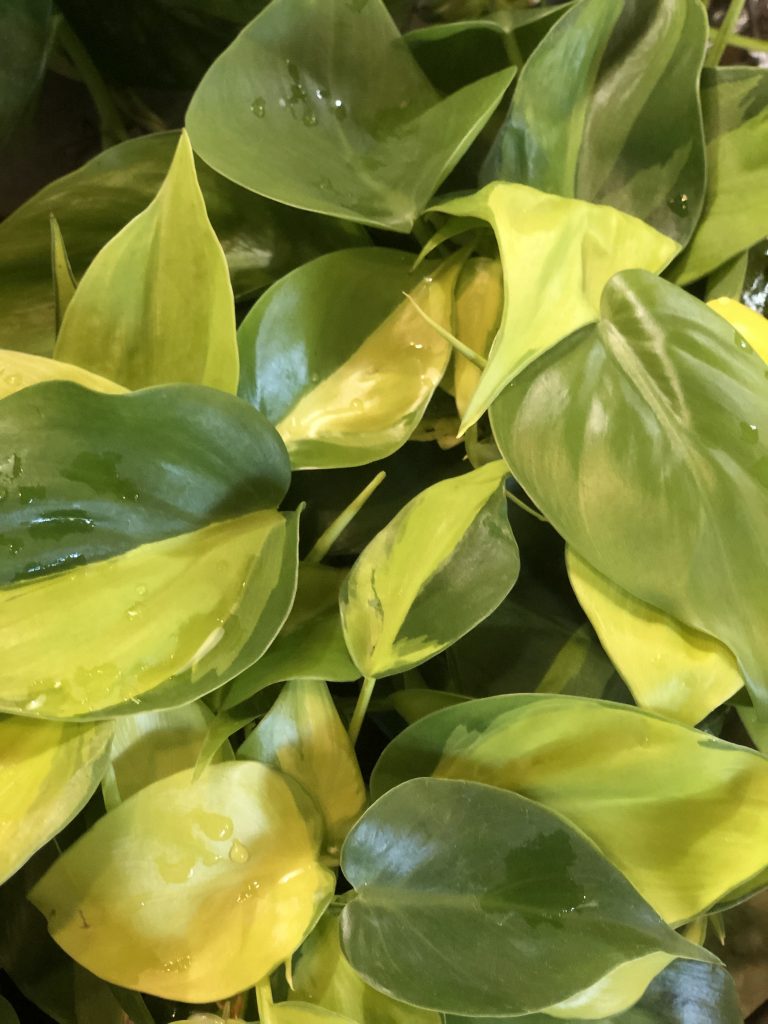
Brasil Philodendron (Philodendron hederaceum ‘Brasil’)
But we digress! Keep reading, there is more to learn…
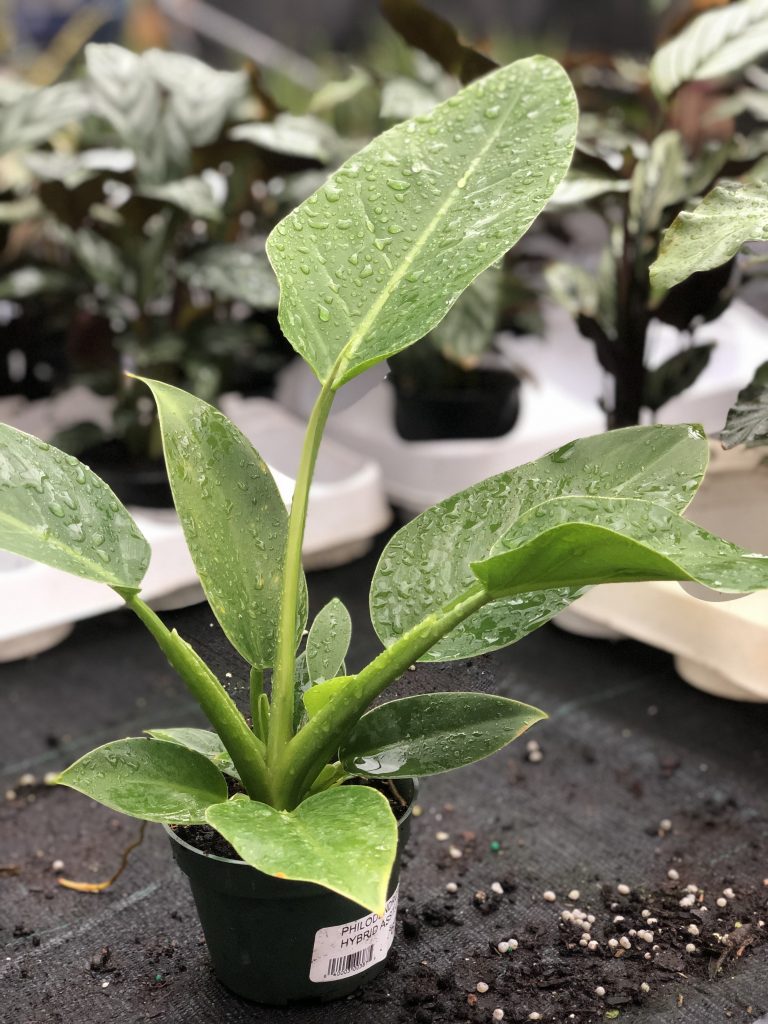
Green Congo Upright Philodendron (Philodendron ‘Congo’)
Watering and Feeding Philodendrons, Pothos and Monstera Plants
All of these can survive getting pretty dry but grow much better with even watering. Allow soil to dry out slightly between waterings. Moisture Meters can help you figure out a watering schedule that works best for your plants. Avoid letting these cousins sit in water. That may sound odd, given that they can be rooted in water (more on that below) but it’s true. They don’t like to sit in soggy soil; plant in containers with good drainage, use one of the potting soils mentioned above and empty saucers within a few hours of watering. Proper watering is key; check out this post for more tips on watering houseplants.
Philodendron, pothos and monsteras all benefit from regular fertilizer. Visit this blog post for more information on properly fertilizing houseplants.
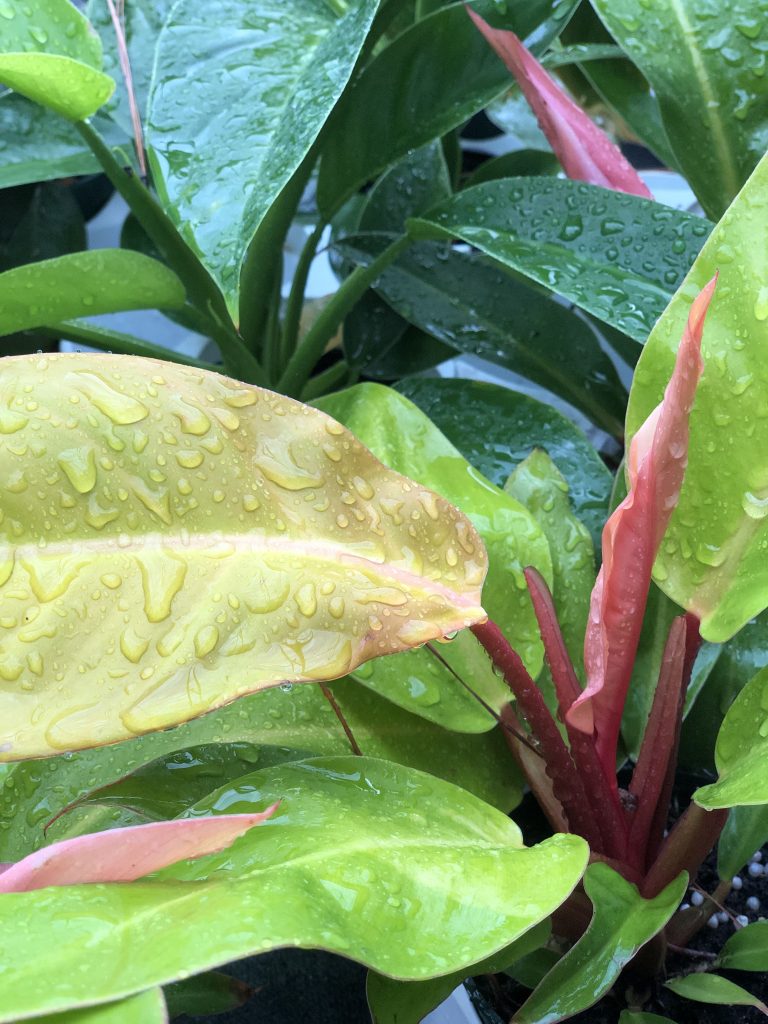
Prince of Orange Upright Philodendron (Philodendron ‘Prince of Orange’
Lighting for Philodendrons, Pothos and Monstera Plants
Bright, indirect light. That is what many houseplants do best in, and these three are no exception. Except… the philodendron and pothos with yellow, white or other color leaves need brighter light. If they start to fade to a dull green, move them into a space with more light. Solid green leaf varieties can withstand less light, or even just artificial light. Learn more about houseplant lighting in this post.
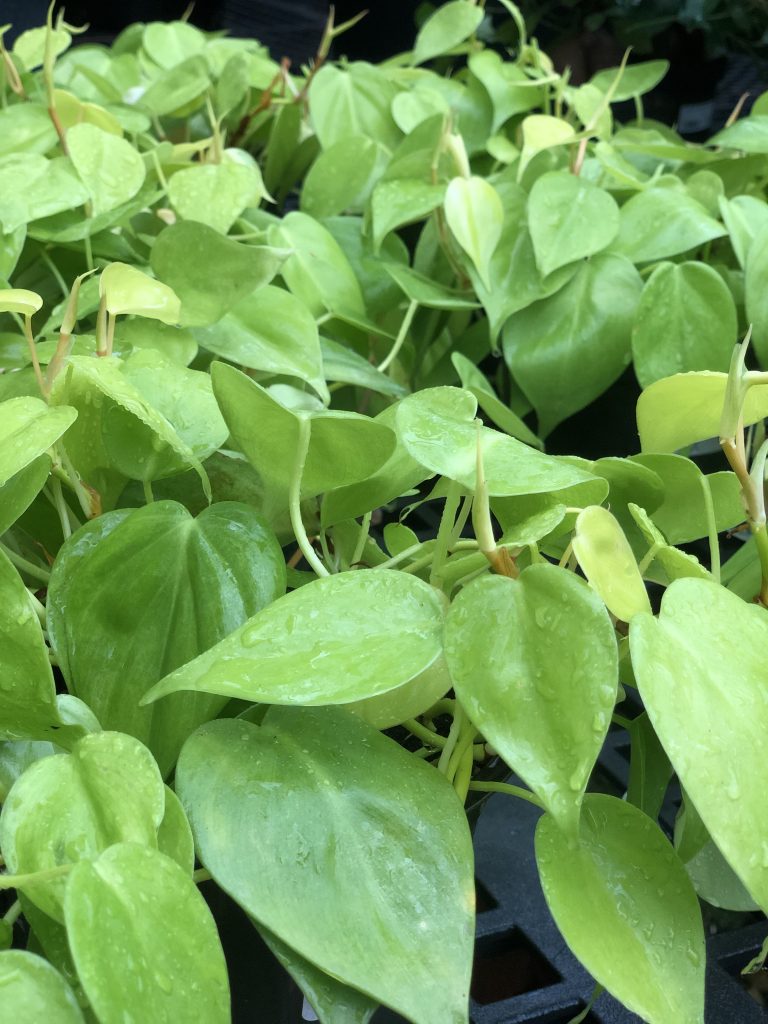
Lemon Lime Philodendron (Philodendron hederaceum ‘Lemon’)
Looking Leggy?
Plants can get leggy over time. For vines, this is when they have poor branching, and dwindle into a few long, spindly vines, with few leaves. It can be hard to bring yourself to do it, but both philodendron and pothos vines benefit from pinching back or trimming off longer stems. This will encourage more growth and branching from the base of the plant, keeping the plant more compact. It’s still going to vine so don’t worry about that bit!
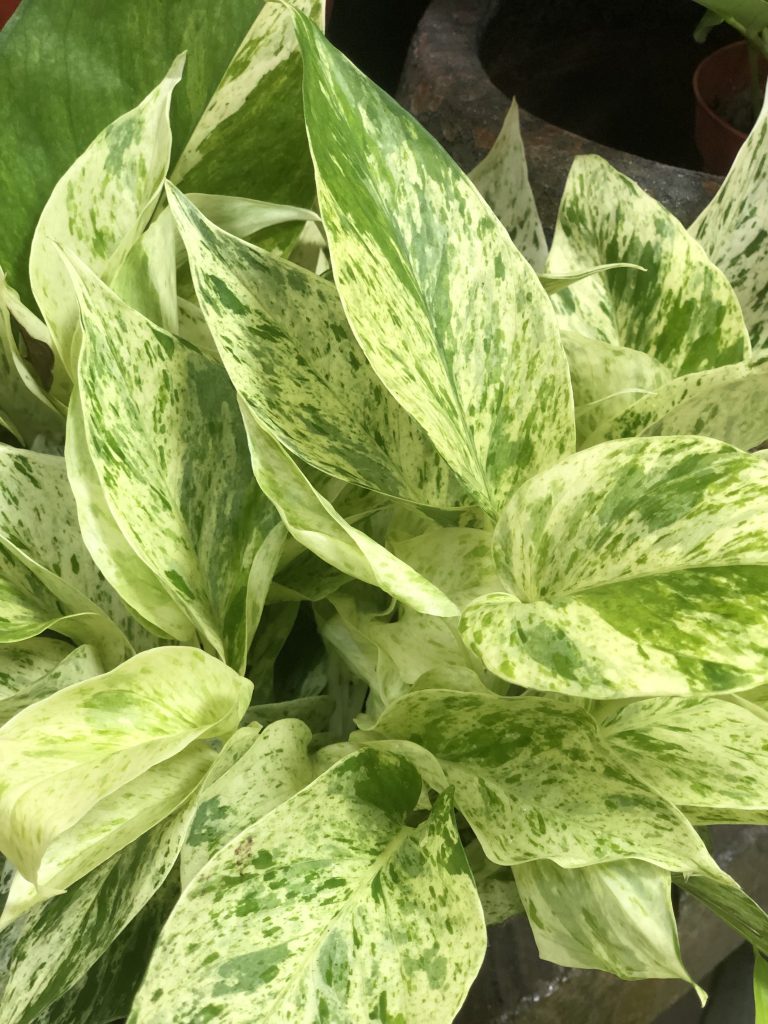
Marble Queen Pothos (Epipremnum aureum ‘Marble Queen’)
If your philodendron or pothos already has a long stem with limited foliage, both of these plants can be easily rooted. Trim the vine into pieces, each one with two leaf nodes. Leave one leaf on the node, and remove the bottom leaf. This can then be placed into moist soil or a jar of water. Within weeks of this, you will see a new shoot. Pinch the new shoot back; this will encourage branching.